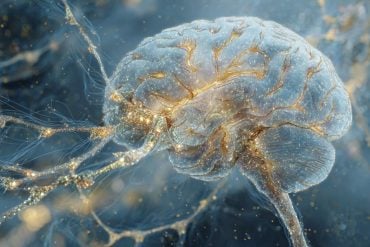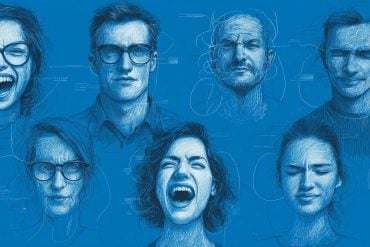Summary: A new study shows how math helps explain why babies nap erratically, teens stay up late, and older adults wake earlier. Researchers expanded the classic two-process sleep model by adding the effects of light exposure, uncovering how internal and external factors interact to regulate sleep.
Simulations revealed that modern indoor light environments disrupt the delicate balance between the brain’s sleep pressure, body clock, and light cues. These findings point toward more personalized and practical solutions to improve sleep for all ages.
Key Facts:
- New Model: Combines sleep pressure, body clock, and light effects into one framework.
- Life-Stage Insight: Explains sleep quirks in babies, teens, and older adults.
- Practical Solutions: Highlights how light and routine changes can improve sleep.
Source: University of Surrey
Wonder why babies nap on some days but not on others? Or why older people wake up earlier?
Mathematical modelling of sleep regulation provides some surprising answers to these and other questions, according to a new study from the University of Surrey.
In a paper published in Biological Timing and Sleep, researchers analysed the mathematical structure of the two-process model (2PM) of sleep regulation, which was first proposed in the 1980s.
The 2PM explains how our sleep patterns are shaped by two factors – a pressure to sleep that builds the longer we are awake and diminishes during sleep, and the near 24-hour rhythm of our internal body clock.
Surrey’s research team used maths to show how the 2PM reflects what happens in the brain as people switch between sleep and wakefulness. They showed that the 2PM helps explain why babies at some developmental stages nap on some days and not on others, a phenomenon referred to as the “Devil’s staircase” by oscillator theorists. And that the same model can explain sleep patterns in non-human species.
The research team also combined the mathematics of sleep-wake switching with the mathematics of the effects of light on the biological clock. This integrated model helps to explain how many sleep phenomena are caused by a combination of internal physiological processes and the environment. For example, the model helps explain why teenagers tend to fall asleep and get up later than younger children.
A slower rise in sleep pressure during wake means they can stay up longer and exposure to bright light in the evening can push sleep even further back. The model also offers new ways to think about other common patterns.
One surprising finding is that waking up earlier as we get older may not be driven mainly by changes to the body clock, as often assumed. Instead, it could result from how the different systems that control sleep interact – and how those interactions change with age, environment and individual biology.
The team’s work shows that this 2PM plus light model offers a way to understand why some people find it hard to wake early or sleep at socially expected times – not because their body clock is broken, but because their (light) environment or biology pushes their sleep later.
Professor Anne Skeldon, Head of the School of Mathematics at the University of Surrey and lead author of the study, said:
“This model gives us hope that sleep problems can be better understood and tackled. By using maths, we can see how small changes in light, routine or biology shift our sleep, and test practical ways to support better sleep for everyone. It’s a step towards more personalised, effective solutions that improve people’s daily lives.”
Using mathematics, the researchers were able to show that the 2PM plus light model behaves like a system of nonlinear oscillators – a sleep-wake oscillator, the oscillations of the body clock and the light-dark pattern that reaches our brain through our eyes.
They explain how the sleep-wake oscillator does not generally follow a 24-hour pattern, but it is the interaction with the body clock and the light-dark pattern that keeps us aligned to the day-night cycle through a process known as entrainment.
To explore further how these oscillations interact, the researchers have run mathematical simulations using the 2PM plus light model. These simulations suggest that living inside most of the day and keeping the lights on in the evening disrupts the oscillator system, disrupting our sleep.
These simulations allowed them to predict a range of behaviours, such as shifting sleep after late-night light exposure or finding it hard to sleep regularly.
Professor Derk-Jan Dijk, co-author of the study and Director of the Surrey Sleep Research Centre at the University of Surrey, said:
“This work shows how maths can bring clarity to something as complex and personal as sleep. With the right data and models, we can give more tailored advice and develop novel interventions to improve sleep patterns for those whose rest is affected by modern routines, ageing or health conditions.”
About this math modeling and sleep research news
Author: Dalitso Njolinjo
Source: University of Surrey
Contact: Dalitso Njolinjo – University of Surrey
Image: The image is credited to Neuroscience News
Original Research: Open access.
“The complexity and commonness of the two-process model of sleep regulation from a mathematical perspective” by Anne Skeldon et al. npj Biological Timing and Sleep
Abstract
The complexity and commonness of the two-process model of sleep regulation from a mathematical perspective
The two-process model (2pm) of sleep regulation is a conceptual framework and consists of mathematical equations. It shares similarities with models for cardiac, respiratory and neuronal rhythms and falls within the wider class of coupled oscillator models. The 2pm is related to neuronal mutual inhibition models of sleep-wake regulation.
The mathematical structure of the 2pm, in which the sleep-wake cycle is entrained to the circadian pacemaker, explains sleep patterns in the absence of 24 h time cues, in different species and in early childhood.
Extending the 2pm with a process describing the response of the circadian pacemaker to light creates a hierarchical entrainment system with feedback which permits quantitative modelling of the effect of self-selected light on sleep and circadian timing.
The extended 2pm provides new interpretations of sleep phenotypes and provides quantitative predictions of effects of sleep and light interventions to support sleep and circadian alignment in individuals, including those with neurodegenerative disorders.







